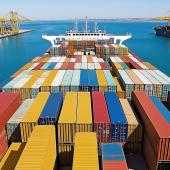World wine production reaches record figures
The 2018 figures for wine production, wine consumption and international trade were officially announced by the OIV (International Organisation of Vine and Wine) at its headquarters in Paris on 11 April.

After a year of historically low production in 2017, world wine production grew by 42.5 million hectolitres (mhl) in 2018 to an estimated 292.3 mhl, not far short of the exceptionally high level of 2004.
Italy confirmed its position as the world’s largest producer with 54.8 mhl, followed by France (49.1 mhl) and Spain (44.4 mhl). In the Americas, wine production in the United States increased by just 0.5 mhl to a total of 23.9 mhl, while production in Argentina grew to 14.5 mhl (+2.7 mhl) and in Chile to 12.9 mhl. Production declined by 14.1% in South Africa to 9.5 mhl, while China’s production level fell to 9.3 mhl (-2.3 mhl compared to 2017) and Australia saw a 2.2% fall to 12.9 mhl. New Zealand’s production remained stable at 3 mhl.
Global consumption appears to have stalled (estimated 246 mhl), due primarily to declines in consumption in China and the UK. Demand in the United States remained high (33 mhl, +1.1% on 2017), while a modest decline was observed in South America, except Brazil. Consumption in most countries in Europe remained stable, with the exception of Spain (where it increased for the third consecutive year to reach 10.7 mhl in 2018), Portugal (5.5 mhl in 2018), Romania (4.5 mhl) and Hungary (2.4 mhl). China’s 2018 consumption appears to have declined by 6.6% since 2017 to reach 18 mhl. South Africa’s consumption also fell slightly to 4.3 mhl. Compared with 2017, consumption in Australia increased by 6.1% to reach 6.3 mhl, while in New Zealand it remained almost stable at 0.9 mhl.
As for formats, bottled wines continued to make up the majority of wine exports in terms of volume at 53% (down 8% on 2017) and accounted for 70% of total value. Bulk wine exports in containers larger than 10 litres accounted for 34% of volumes (-5%) and 8% of value (+3.8%). Following the new customs classification introduced in 2017, bag-in-box wines of between 2 and 10 litres represented 4% in volume and 2% in value.



















